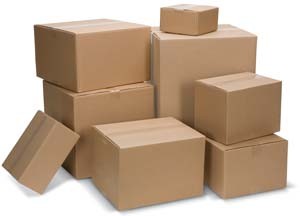If you’ve been reading your seller emails from Amazon, you know that starting November 1, 2016, FBA sellers will be required to provide box level details of the contents of their shipments to FBA warehouses. Failing to provide those details will incur a fee for your shipments of 15 cents per item. Additionally, Amazon has stated that shipments without box contents provided might experience a slower check-in time than shipments providing the box level details.
The thought of adding an extra step to the FBA shipment process isn’t super appealing to most Amazon sellers – the fewer the steps the better, right? But I (Stephen) have added box level details to my shipments for the past month now, and I can tell you it’s not as bad as you might have heard.
 Really, it’s in your best interest to start NOW learning how to add the details and practicing with shipments of various sizes. In the long run, spending 5-10 extra minutes per shipment to add the box level details will definitely save you money and potentially save you time: definitely the money from the fees for not providing the details and potentially the time of your shipment being delayed during check-in because you didn’t provide the details.
Really, it’s in your best interest to start NOW learning how to add the details and practicing with shipments of various sizes. In the long run, spending 5-10 extra minutes per shipment to add the box level details will definitely save you money and potentially save you time: definitely the money from the fees for not providing the details and potentially the time of your shipment being delayed during check-in because you didn’t provide the details.
There are five ways you can handle adding the box level details to your shipment:
- Only ship one box at a time – no need to provide extra details.
- Ship multiple boxes, but only one SKU per box – no need to provide extra details.
- Ship 25 SKUs or less in multiple boxes, and you can provide details through the web-based form on Seller Central.
- Ship more than 25 SKUs in multiple boxes, and you can provide details through an Excel spreadsheet uploaded to Seller Central.
- Use a third-party listing software to provide details.
I’m not exaggerating when I say providing box contents will add only 5-10 minutes to packing your shipment. It really isn’t a long, time-consuming process. So far, I’ve been listing my shipments in Inventory Lab and then finishing out the shipment process (including providing box level details) in Seller Central. In the very near future I will try out Inventory Lab’s new box level detail process and report back on my thoughts on it.
For a tutorial of how to use the #3 and #4 methods above, I’ve made the following screen capture video walking you through the process.
As you can see in the video, the steps for filling out the forms are rather straightforward. To assist in the process of knowing which items I’ve packed in which boxes, I always print out my form so that I can check off the items on paper as I’m packing; then I transfer my check marks to the online form or Excel sheet once the boxes are packed.
 If you decide that providing the box content details is too annoying or time-consuming, you do have the option to skip this step in the process, but you will incur a fee of 15 cents per item in that shipment. This may seem like a small fee, but be careful because those charges can add up quickly. Let me show you how.
If you decide that providing the box content details is too annoying or time-consuming, you do have the option to skip this step in the process, but you will incur a fee of 15 cents per item in that shipment. This may seem like a small fee, but be careful because those charges can add up quickly. Let me show you how.
I recently had a 92-item shipment of more than 25 SKUs, so the fees to skip the box level details for that shipment would be $13.80. I timed myself as I provided the box contents for the shipment through Excel, and it only added 6 minutes to my processing time. If you do the math, $13.80 in fees versus 6 minutes of my time means that I would have been paying Amazon $138/hour to allow me to skip that step. It’s worth it to me to just spend the extra 6 minutes and keep that $13.80 in fees to spend on more inventory to sell on Amazon.
As with so many other changes that happen over time in selling on Amazon, there will be a day in the not-so-distant future where adding box content details is ingrained in our minds as just one more step in the process, not as a new time-sucking step. Ultimately, providing box level details should theoretically help us as sellers have an easier time reconciling issues with lost inventory from shipments during the check-in process, which makes the entire process worth it, in my mind.
To read for yourself the Amazon guidelines about providing box level details, click here.
Have you been using the web form or Excel sheet to provide box level details on your Amazon FBA shipments? Do you have any advice to add on this topic? Please let us hear from you in the comments!

I usually print my shipping order(s) out when getting ready to pack up my items, and then start working on boxes. Often I move items from one box to another while packing, to get the most efficient packing option, so I don’t note the box # on my form until I’m happy with the way I’ve packed things. I usually just put the box # next to my items on the form, along with the amount of that SKU that is in a certain box, if I put the same SKU into more than one of the boxes. Then it’s quick to fill in the spreadsheet. I like that Amazon now has the online form for a smaller shipment, and that they’ve updated the spreadsheet format. I started filling in box info a few months ago when they first asked for it, and it does seem to help with shipments usually getting checked in efficiently when they get to the warehouse.
A little tip: Working with the spreadsheet on my computer, I usually “hide” several of the columns while I’m filling in the info, so that the item description and # of expected info shows, and then the next columns are the box numbers. This makes it easy to keep track of which item I’m logging. I just “unhide” the columns when I’m done entering the info, and then save the document to get it ready for upload. If you don’t know how to hide and unhide columns or lines in Excel, it’s very easy. You just highlight the columns you don’t want to see, and on the “View” section of the top menu, there is an option to click to Hide them. When you’re ready to Unhide them, you just select the two columns around them, and go back to View, and click “Unhide.” Column titles like ABC remain the same, so it’s easy to see that part of the alphabet of columns has been hidden, and thus what to select to unhide.
Heather, your comment added some great tips! Thanks so much for sharing your thoughts and adding to the blog post. You rock!
Awesome demo. Thanks so much. I believed it was be much difficult.
Stephen, you did it again — you just continue to make building this business in the fba Amazon platform clearer and easier to understand and implement.
I truly appreciate all you do……………. I’m shipping tomorrow without paying the extra fee. Cool, eh?
That’s awesome! Glad it was helpful to you. 🙂
Thanks immensely for sharing this great Blog/Video to let Sellers know how easy it is to feel the box content details prior to Shipping. I started doing it back in November when Amazon piloted it and back then you have to build your own excel template. Now Amazon has made it very easy and provided very good user friendly templates for that. With all the fees being thrown at us the Sellers, one should definitely avoid this one and give the box content and save money. One other thing is that it helps in reconciliation and also in tracking missing inventory as one could easily send Amazon the file as a proof that the item in question was shipped. It has helped me get reimbursed for numerous missing items. Again thanks for all your help.
ONE WARNING!
Be sure NOT to change the name of the template file you download. I did that for my convenience in finding it and it took me hours and hours working with Amazon support before we figured out the uploading app. doesn’t like a name change to the file.
Thanks for the great information. One of my orders was split and I am now required to send one small paperback book to another location. When I filled out the shipping information, I couldn’t enter a weight for less than a pound. Can I work around this somehow so it is not so expensive? Thank you!
Yes, 1 pound is the minimum for a shipment. You can keep that shipment open and add more items to it later… that’s the best way to handle this. It’s against Amazon’s guidelines to delete the shipment… but once or twice is probably not going to hurt you. Also, look at the overall shipments and the shipping rate you’re getting instead of only looking at the shipping for that one item. If you average it all out, you’re still getting a great shipping rate overall. Hope this helps.
https://wiwonder.com/antalyacarscom
Idea excellent, it agree with you.